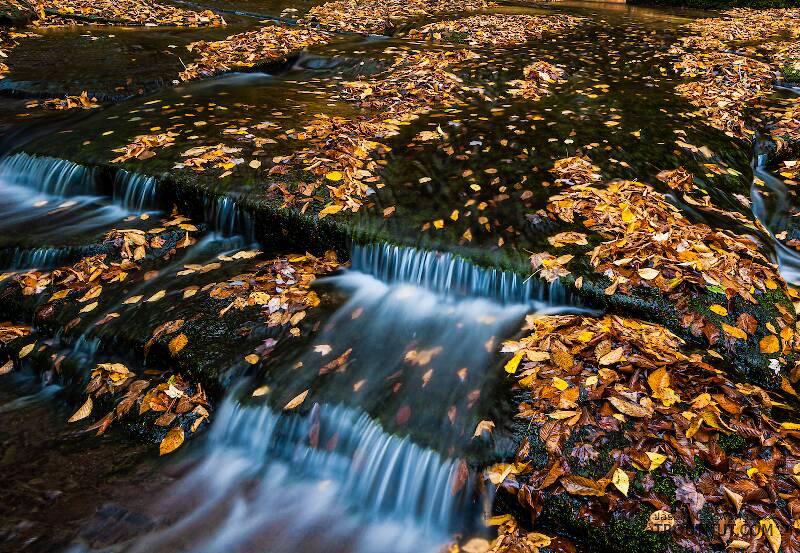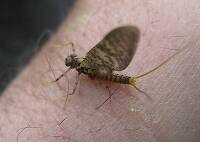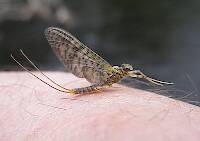
Salmonflies
Pteronarcys californica
The giant Salmonflies of the Western mountains are legendary for their proclivity to elicit consistent dry-fly action and ferocious strikes.
Featured on the forum

With a bit of help from the microscope, this specimen keys clearly and unsurprisingly to Hydropsyche.

Troutnut is a project started in 2003 by salmonid ecologist Jason "Troutnut" Neuswanger to help anglers and
fly tyers unabashedly embrace the entomological side of the sport. Learn more about Troutnut or
support the project for an enhanced experience here.
Warning: Trying to access array offset on value of type null in /home/jasonn5/func/commoncontent.fnc on line 837
Warning: Trying to access array offset on value of type null in /home/jasonn5/func/commoncontent.fnc on line 838
Warning: Trying to access array offset on value of type null in /home/jasonn5/func/commoncontent.fnc on line 839
Warning: Trying to access array offset on value of type null in /home/jasonn5/func/urls.fnc on line 81
Warning: Trying to access array offset on value of type null in /home/jasonn5/func/urls.fnc on line 82
Warning: Trying to access array offset on value of type null in /home/jasonn5/func/urls.fnc on line 83
Error: Problem with location id=169.
array_map <— {closure} <— getMixedPostsHTML <— getRelatedTopicsHTML <— getFullHTML <— printPageBody <— cc_printPageFromTemplate
array_map <— {closure} <— getMixedPostsHTML <— getRelatedTopicsHTML <— getFullHTML <— printPageBody <— cc_printPageFromTemplate
By Dneuswanger on August 19th, 2014
Having recently retired as Unit Fisheries Supervisor for the Department of Natural Resources in Hayward, Wisconsin, I flew to Fairbanks to help my son Jason (aka Troutnut) with various aspects of his new post-doc project researching the drift-feeding ecology of salmonids in Alaska. After several days of equipment fabrication and modification in Fairbanks, we were finally ready to test his new underwater video gear and methods on Dolly Varden char in Mystery Creek #170. Our destination was a remote reach of stream just outside Denali National Park. Previously, Jason had walked the stream in waders to assess the distribution of Dolly Varden in his study area, but there was no obvious path through the dense riparian vegetation.
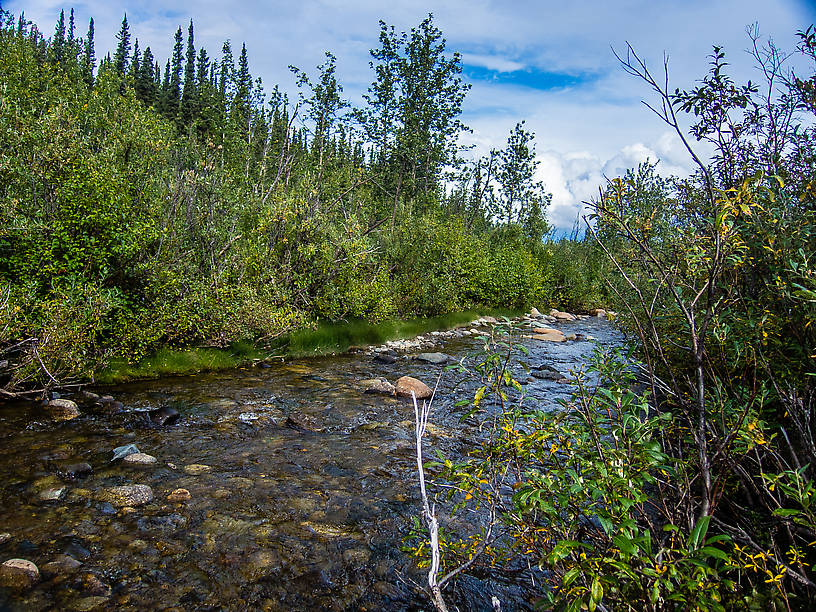
Arriving in late morning, we were resigned to making three trips to the study site to pack in all the gear needed for camping and field work. With heavy backpacks, we picked our way slowly upstream though alder thickets and stands of spruce so dense that their dead, broken lower branches threatened to skewer anyone silly enough to try passing through. Trekking around these obstacles and over numerous deadfalls, we made agonizingly slow progress. At times we were too far from the creek to hear it, but we thought we were following the path of least resistance. After an hour of bushwhacking and marking trail (thinking we might return along the same path), we finally arrived at a small, unusual hump of dry land that supported half a dozen large white spruce trees. It was an island of upland in an otherwise dense tangle of lowland vegetation, and it just happened to be within 10 yards of the creek in the general vicinity where Jason hoped to work.
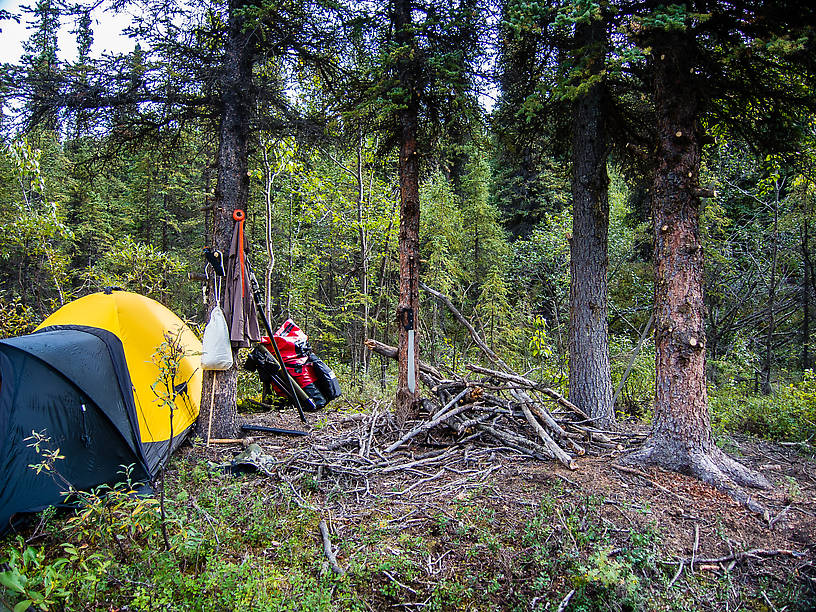
I saw promise in this island of dry ground, especially if we could trim the dead lower branches off the spruce trees in order to move around freely, then store dry firewood and our equipment under a tarp there. An hour of work with bow saw and loppers confirmed this was the ideal spot to establish base camp. There were two sites sufficiently large and level enough to pitch our tents. But before we committed to setting up camp, we returned to the vehicle twice for the rest of our gear. Fortunately, we found a game trail closer to the creek that required only a moderate amount of additional clearing to allow safe and efficient foot travel most of the way. We spent a couple hours improving the trail on our first trip back, retrieved more gear, and hiked back to camp. Our final trip was made in a third the time (~20 minutes) required to hike in earlier.
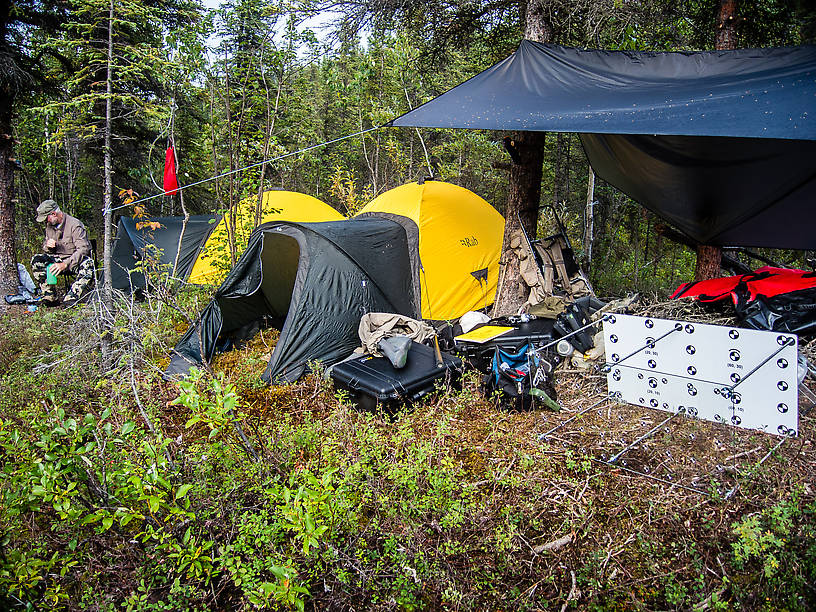
By the time we set up our tents and performed other minor housekeeping chores, it was too late to consider working with underwater video gear. With Jason as my guide, a quick trip to the creek near camp just before dark produced my first Dolly Varden char on a fly – a pretty little brook trout look-alike about 5 inches long. My clumsy over-reaction to setting the hook sent it airborne, much to Jason’s amusement. At dusk I found enough rocks in the creek to make a fire ring on a small ledge above the creek at the edge of camp, and I made a small fire to celebrate the end of a long, arduous day. Mountain House meals were eagerly consumed, and it did not take long to fall asleep in the cool night air.

Arriving in late morning, we were resigned to making three trips to the study site to pack in all the gear needed for camping and field work. With heavy backpacks, we picked our way slowly upstream though alder thickets and stands of spruce so dense that their dead, broken lower branches threatened to skewer anyone silly enough to try passing through. Trekking around these obstacles and over numerous deadfalls, we made agonizingly slow progress. At times we were too far from the creek to hear it, but we thought we were following the path of least resistance. After an hour of bushwhacking and marking trail (thinking we might return along the same path), we finally arrived at a small, unusual hump of dry land that supported half a dozen large white spruce trees. It was an island of upland in an otherwise dense tangle of lowland vegetation, and it just happened to be within 10 yards of the creek in the general vicinity where Jason hoped to work.

I saw promise in this island of dry ground, especially if we could trim the dead lower branches off the spruce trees in order to move around freely, then store dry firewood and our equipment under a tarp there. An hour of work with bow saw and loppers confirmed this was the ideal spot to establish base camp. There were two sites sufficiently large and level enough to pitch our tents. But before we committed to setting up camp, we returned to the vehicle twice for the rest of our gear. Fortunately, we found a game trail closer to the creek that required only a moderate amount of additional clearing to allow safe and efficient foot travel most of the way. We spent a couple hours improving the trail on our first trip back, retrieved more gear, and hiked back to camp. Our final trip was made in a third the time (~20 minutes) required to hike in earlier.

By the time we set up our tents and performed other minor housekeeping chores, it was too late to consider working with underwater video gear. With Jason as my guide, a quick trip to the creek near camp just before dark produced my first Dolly Varden char on a fly – a pretty little brook trout look-alike about 5 inches long. My clumsy over-reaction to setting the hook sent it airborne, much to Jason’s amusement. At dusk I found enough rocks in the creek to make a fire ring on a small ledge above the creek at the edge of camp, and I made a small fire to celebrate the end of a long, arduous day. Mountain House meals were eagerly consumed, and it did not take long to fall asleep in the cool night air.
Photos by Dneuswanger from Mystery Creek #170 in Alaska
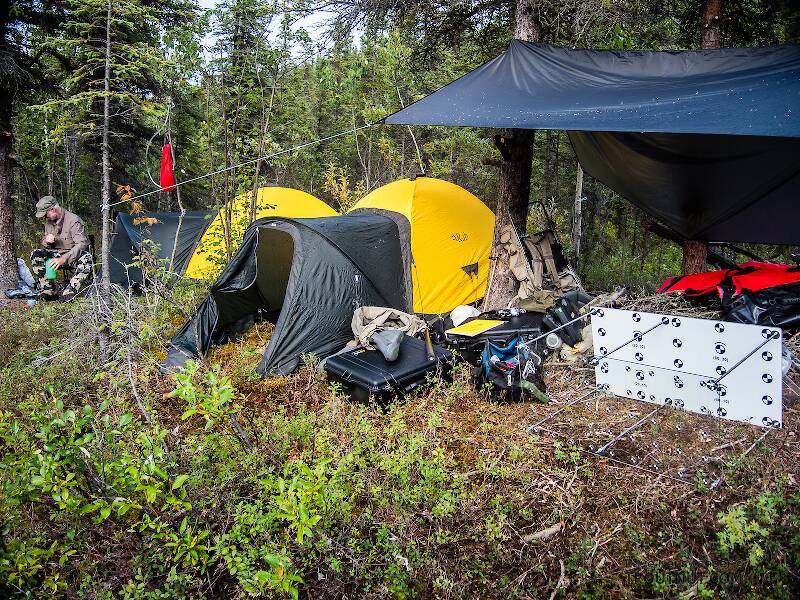
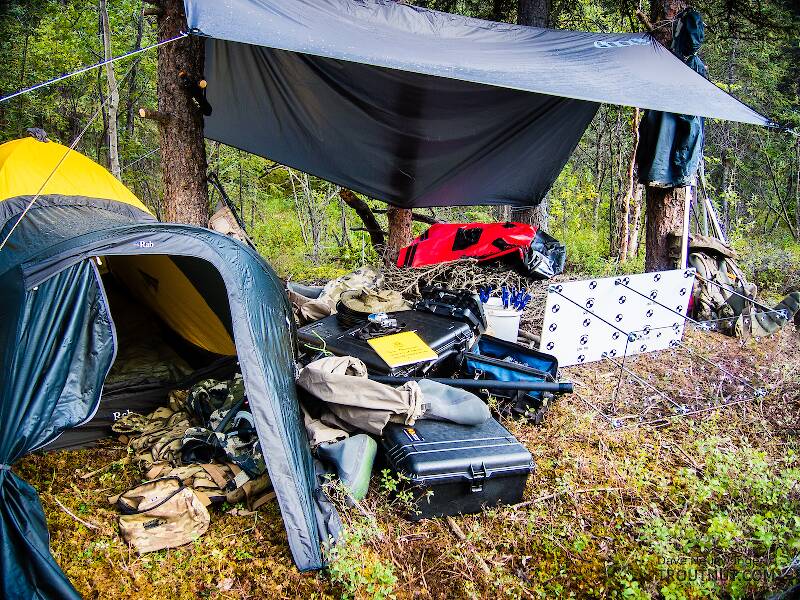
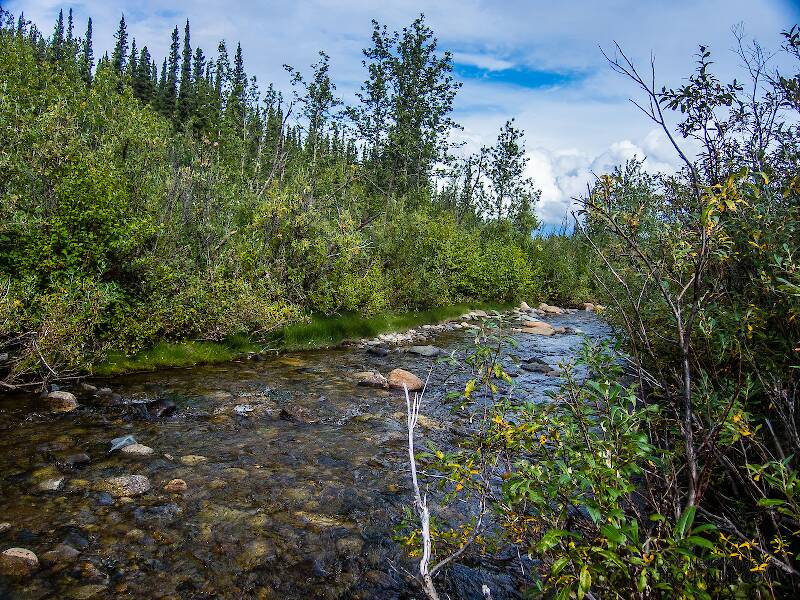
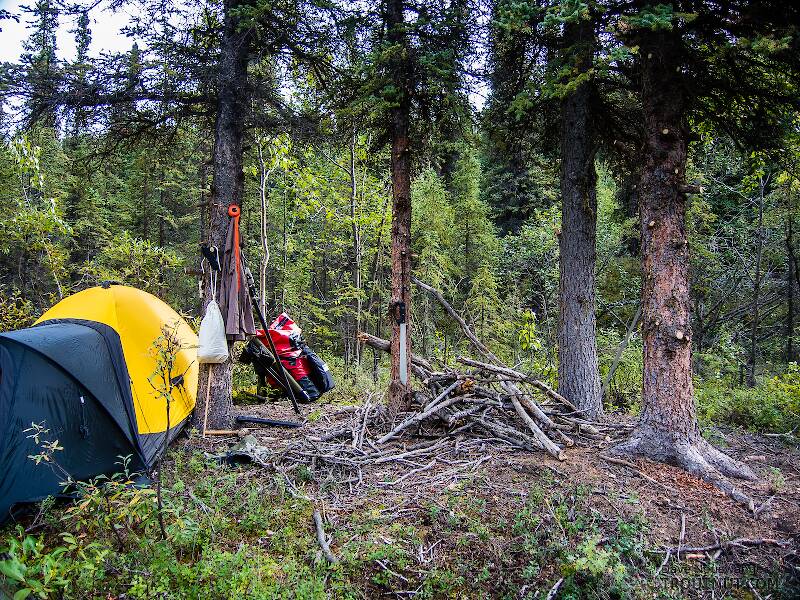
Quick Reply
Related Discussions
Topic
Replies
Last Reply
8
Aug 23, 2016
by PaulRoberts
by PaulRoberts
5
May 20, 2009
by GONZO
by GONZO
0
May 15, 2016
by Leonardo
by Leonardo

